Moor please: Matt Fajkus’ shimmering Texas boathouse
Filtered Frame Dock, a striking boathouse by Matt Fajkus Architecture, completes on the shores of a Texas ravine

Leonid Furmansky - Photography
The American architecture studio of Matt Fajkus has created this striking boathouse pavilion, placed elegantly on the shores of a Texas ravine. Named Filtered Frame Dock, the project sits on a larger private estate, the main residence of which is also being designed by the same firm, and was created to offer a gateway between the blue waters and the home on site.
Its faceted composition not only feels sharp and modern, but was also created to reflect the context's wider conditions, allowing water and land, nature and architecture to connect meaningfully.
The structure ‘negotiates between the realms of land, water, and sky by framing one’s experience and understanding of the natural environment, above, along, and in the water,' explain the team at Matt Fajkus Architecture. The landscape was a key source of inspiration for the architects, as vistas, light and materiality helped drive the design solution.
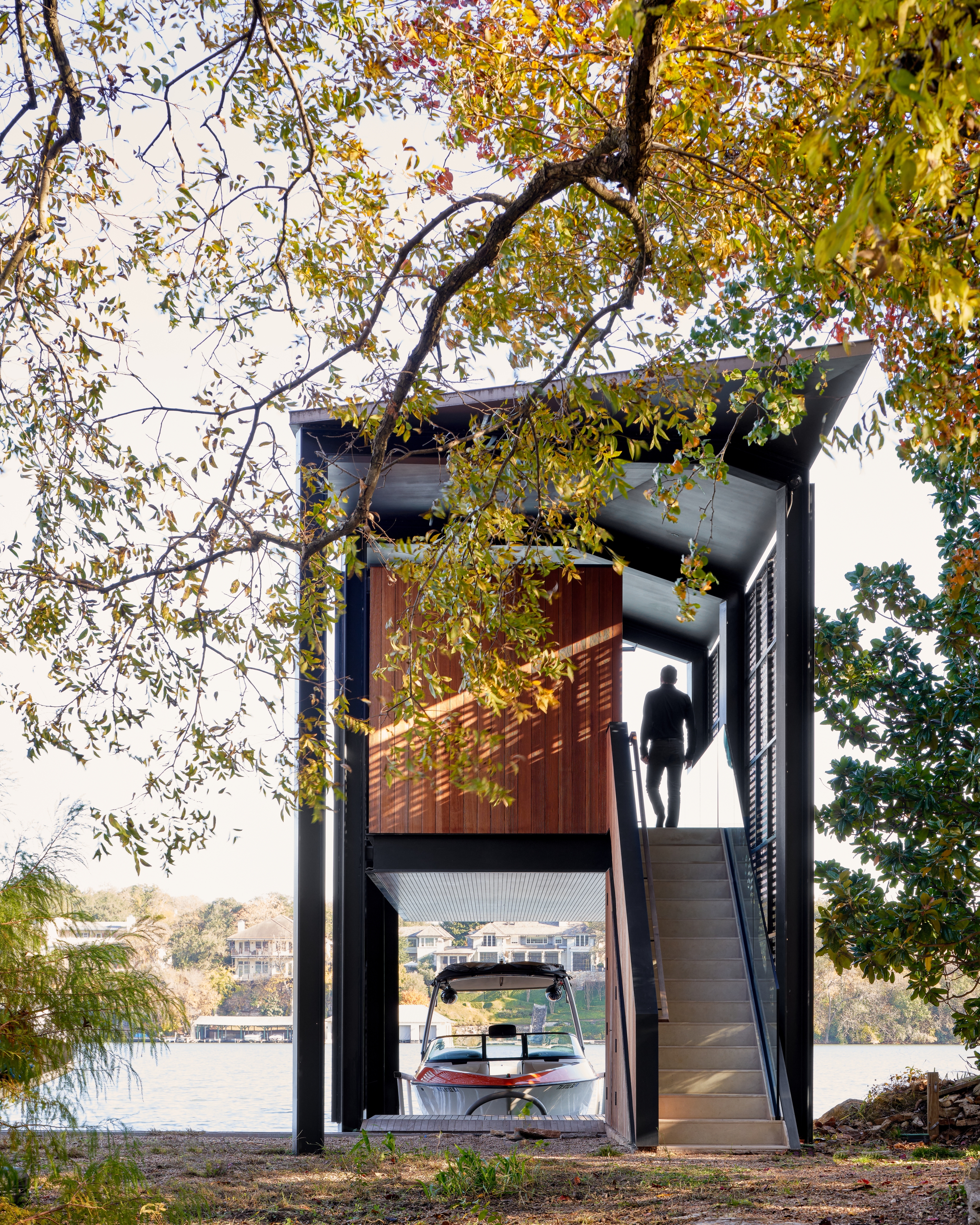
The boathouse's open air nature allows the eye to travel and provides opportunities to view the natural landscape. It encourages movement, and also offers moments to sit and relax – on the decked terrace at the top, above the sheltered dock, for example.
The building’s perforated, geometric surfaces emphasise the connection with nature, encouraging light and air to filter through. User comfort was also carefully taken into account. ‘As the seasons shift, the dock provides greater shade during the heat of the summe, and welcomes more sun during the cooler winter months,' say the architects.
The main materials used are steel (for the gently angled roof and perforated stainless sides), timber and stone (the last two chosen for their inherent natural feel and tactile nature). Meanwhile, the overall ‘steel frame is designed and treated to last in the marine environment, enduring its fluctuating environmental conditions’, the team add.
It highlights Matt Fajkus Architecture's commitment to sustainable architecture and an eco-friendly approach that celebrates the land the practice designs for. §
Receive our daily digest of inspiration, escapism and design stories from around the world direct to your inbox.

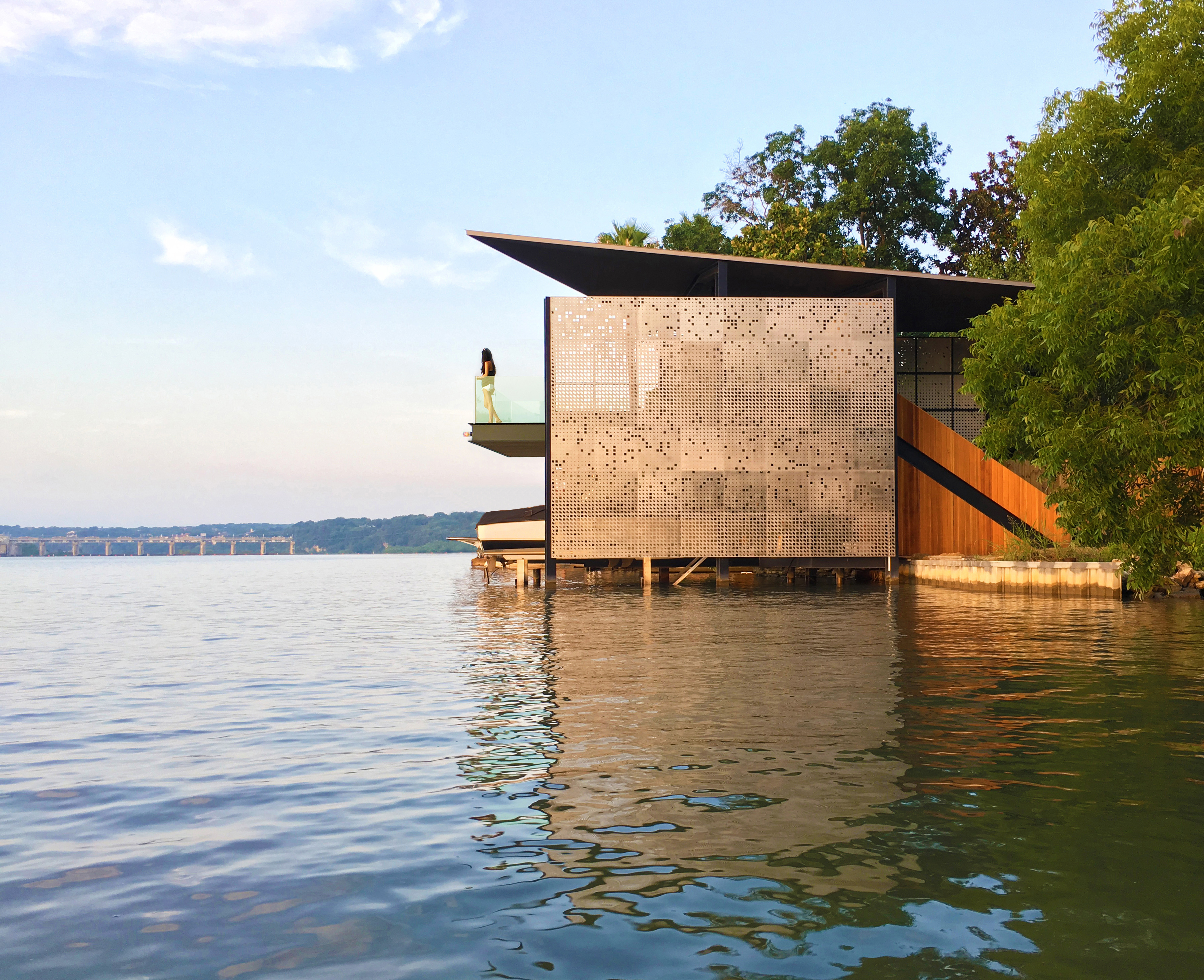
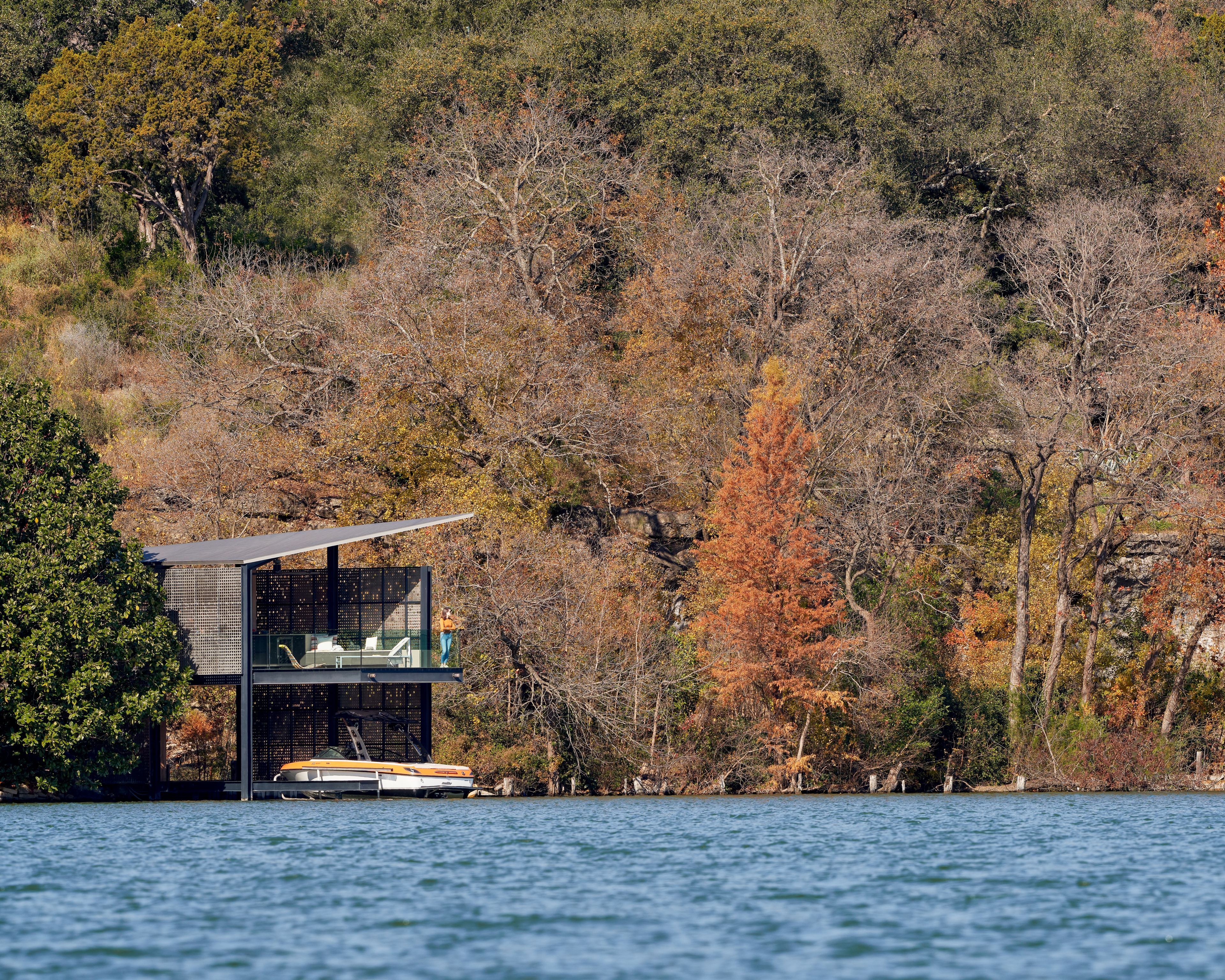

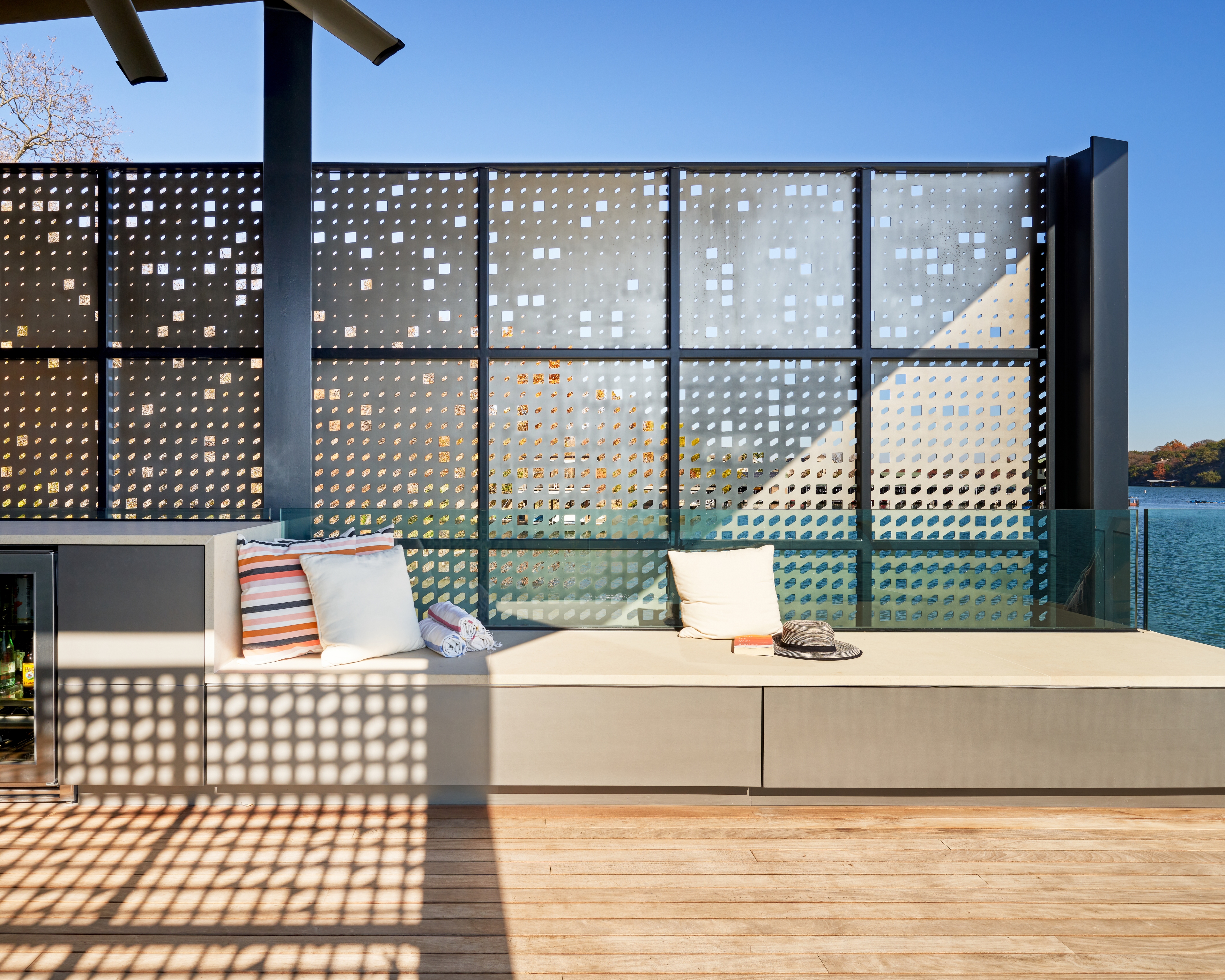
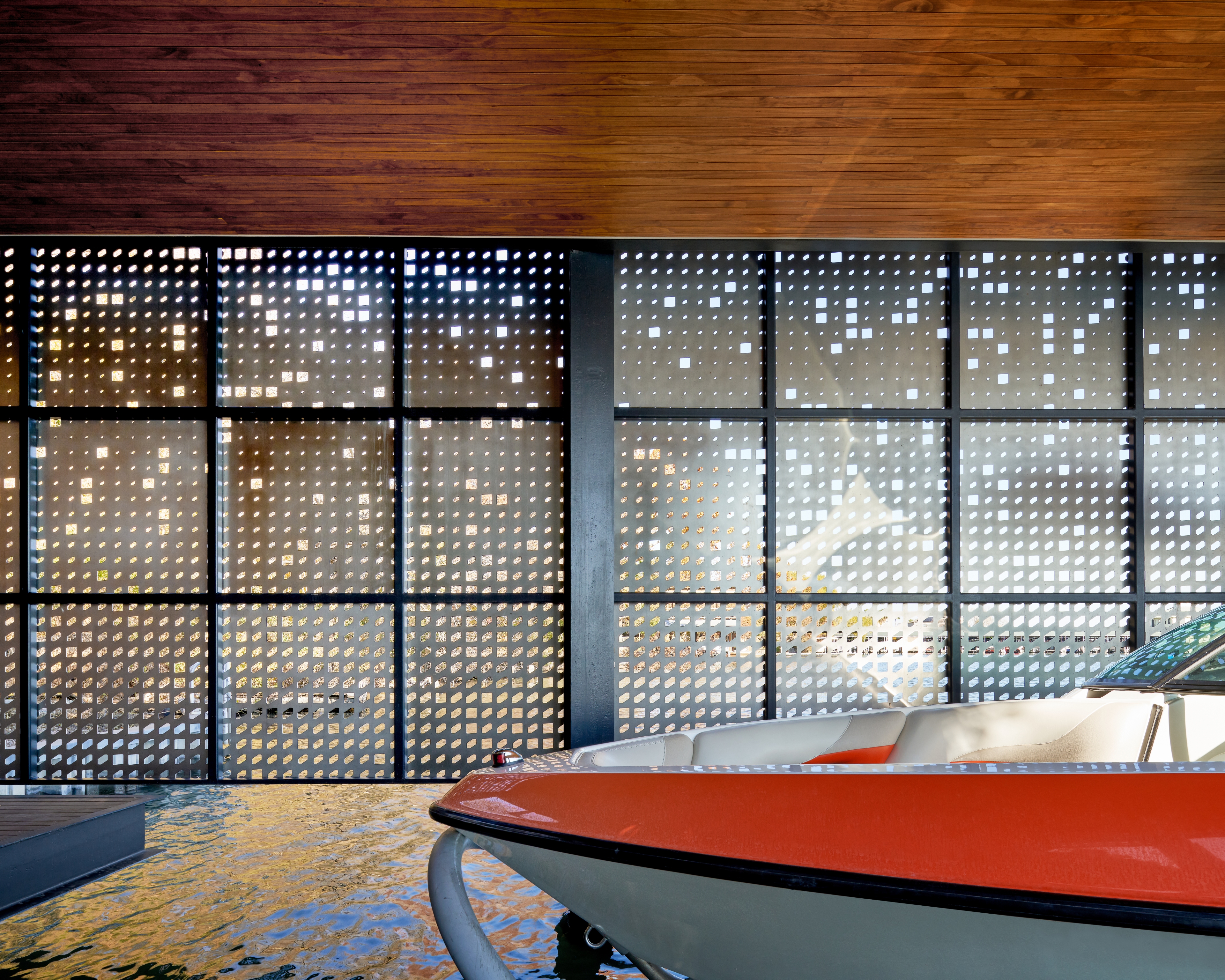
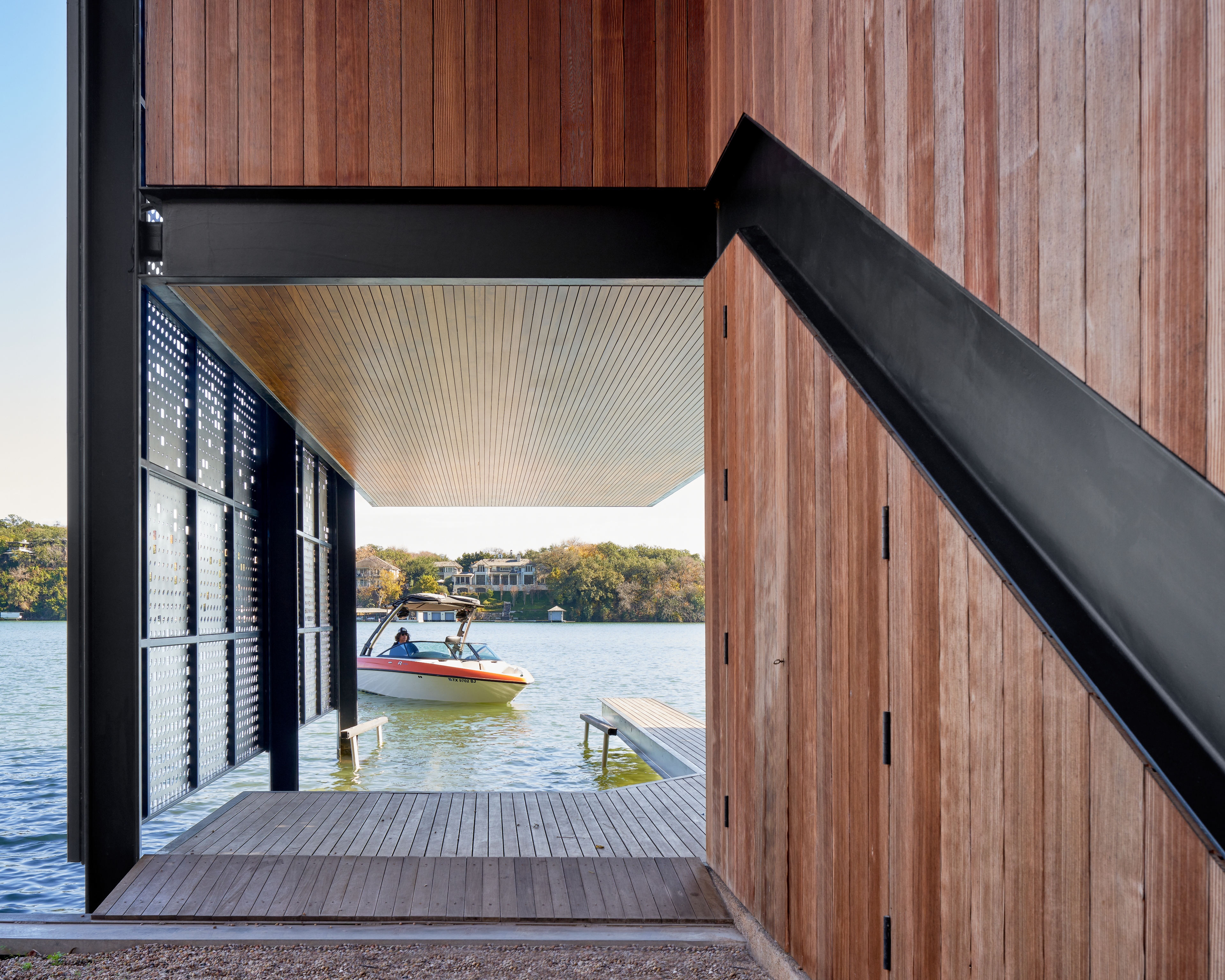
INFORMATION
Ellie Stathaki is the Architecture & Environment Director at Wallpaper*. She trained as an architect at the Aristotle University of Thessaloniki in Greece and studied architectural history at the Bartlett in London. Now an established journalist, she has been a member of the Wallpaper* team since 2006, visiting buildings across the globe and interviewing leading architects such as Tadao Ando and Rem Koolhaas. Ellie has also taken part in judging panels, moderated events, curated shows and contributed in books, such as The Contemporary House (Thames & Hudson, 2018), Glenn Sestig Architecture Diary (2020) and House London (2022).
- Leonid Furmansky - PhotographyPhotographer
-
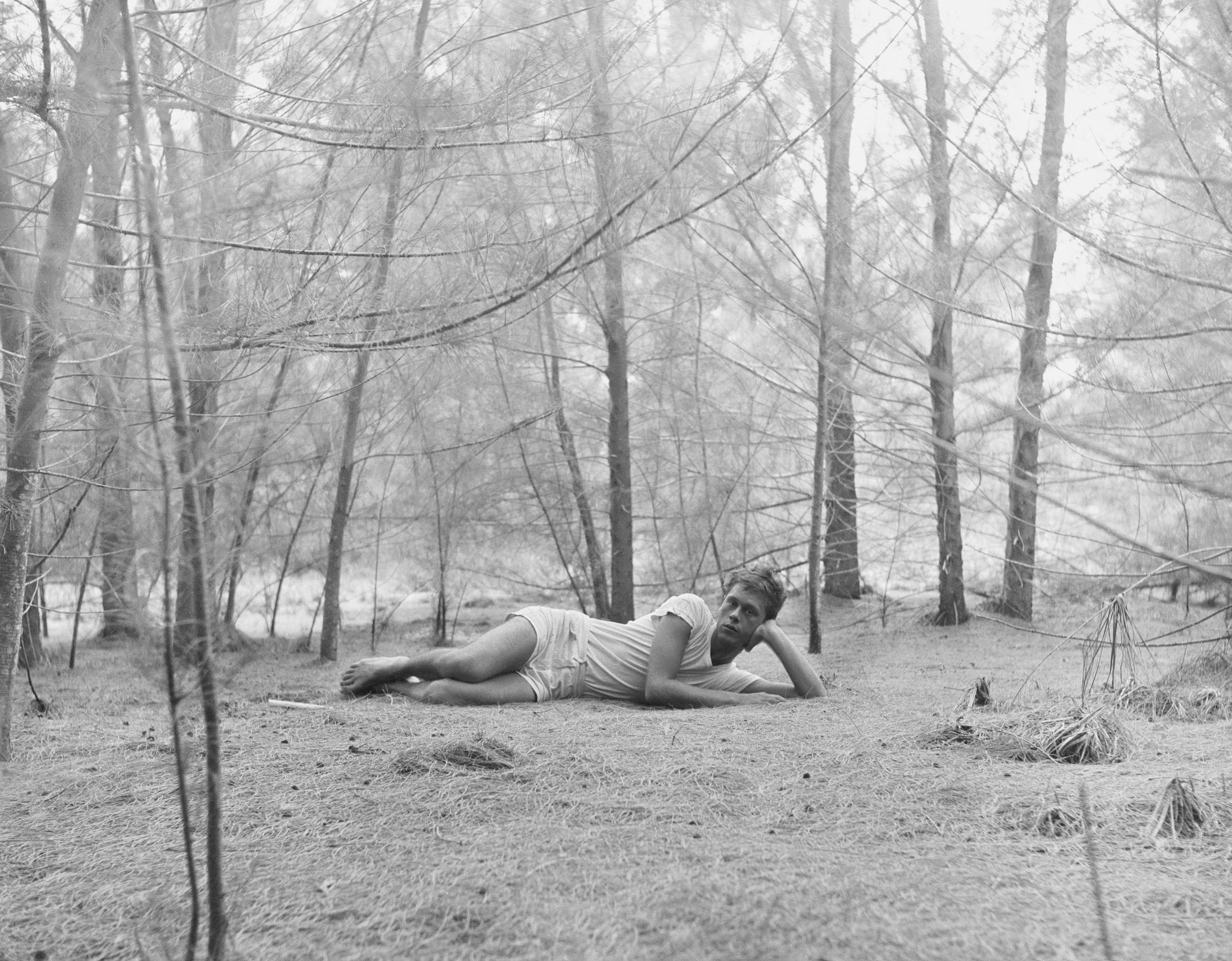 Inside the seductive and mischievous relationship between Paul Thek and Peter Hujar
Inside the seductive and mischievous relationship between Paul Thek and Peter HujarUntil now, little has been known about the deep friendship between artist Thek and photographer Hujar, something set to change with the release of their previously unpublished letters and photographs
-
 In addition to brutalist buildings, Alison Smithson designed some of the most festive Christmas cards we've seen
In addition to brutalist buildings, Alison Smithson designed some of the most festive Christmas cards we've seenThe architect’s collection of season’s greetings is on show at the Roca London Gallery, just in time for the holidays
-
 Six beautiful books to gift the watch and jewellery lover
Six beautiful books to gift the watch and jewellery loverFrom an encyclopaedic love letter to watchmaking to a celebration of contemporary jewellery, these tomes are true gems
-
 Remembering Robert A.M. Stern, an architect who discovered possibility in the past
Remembering Robert A.M. Stern, an architect who discovered possibility in the pastIt's easy to dismiss the late architect as a traditionalist. But Stern was, in fact, a design rebel whose buildings were as distinctly grand and buttoned-up as his chalk-striped suits
-
 Own an early John Lautner, perched in LA’s Echo Park hills
Own an early John Lautner, perched in LA’s Echo Park hillsThe restored and updated Jules Salkin Residence by John Lautner is a unique piece of Californian design heritage, an early private house by the Frank Lloyd Wright acolyte that points to his future iconic status
-
 The Stahl House – an icon of mid-century modernism – is for sale in Los Angeles
The Stahl House – an icon of mid-century modernism – is for sale in Los AngelesAfter 65 years in the hands of the same family, the home, also known as Case Study House #22, has been listed for $25 million
-
 Houston's Ismaili Centre is the most dazzling new building in America. Here's a look inside
Houston's Ismaili Centre is the most dazzling new building in America. Here's a look insideLondon-based architect Farshid Moussavi designed a new building open to all – and in the process, has created a gleaming new monument
-
 Frank Lloyd Wright’s Fountainhead will be opened to the public for the first time
Frank Lloyd Wright’s Fountainhead will be opened to the public for the first timeThe home, a defining example of the architect’s vision for American design, has been acquired by the Mississippi Museum of Art, which will open it to the public, giving visitors the chance to experience Frank Lloyd Wright’s genius firsthand
-
 Clad in terracotta, these new Williamsburg homes blend loft living and an organic feel
Clad in terracotta, these new Williamsburg homes blend loft living and an organic feelThe Williamsburg homes inside 103 Grand Street, designed by Brooklyn-based architects Of Possible, bring together elegant interiors and dramatic outdoor space in a slick, stacked volume
-
 This ethereal Miami residence sprouted out of a wild, jungle-like garden
This ethereal Miami residence sprouted out of a wild, jungle-like gardenA Miami couple tapped local firm Brillhart Architecture to design them a house that merged Florida vernacular, Paul Rudolph and 'too many plants to count’
-
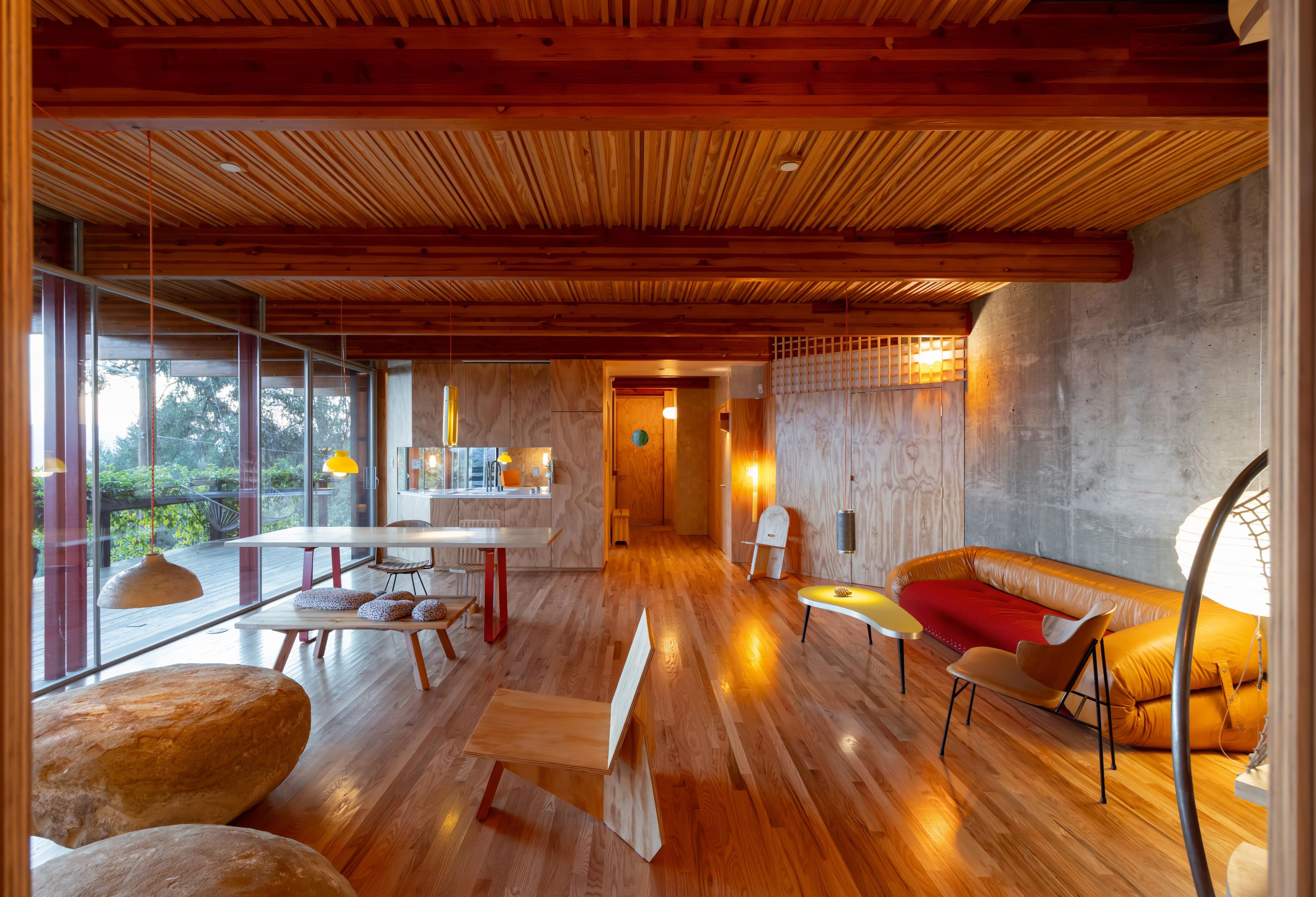 Tour Cano House, a Los Angeles home like no other, full of colour and quirk
Tour Cano House, a Los Angeles home like no other, full of colour and quirkCano House is a case study for tranquil city living, cantilevering cleverly over a steep site in LA’s Mount Washington and fusing California modernism with contemporary flair